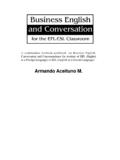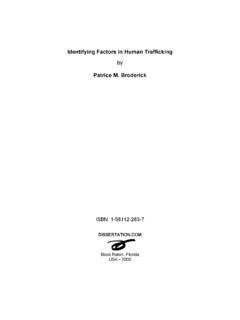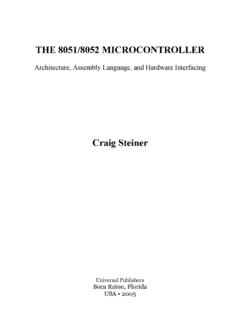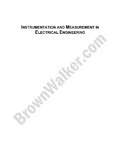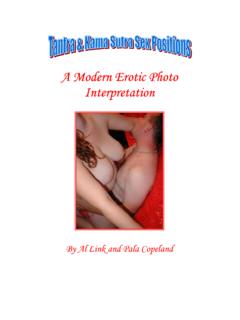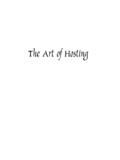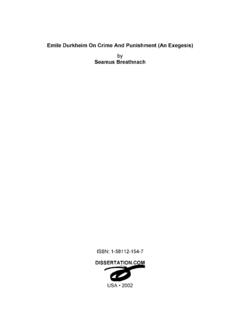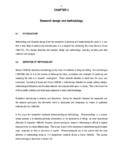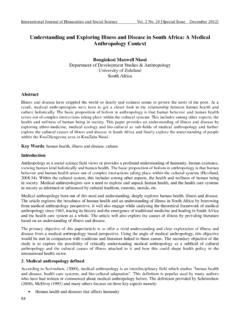Transcription of Qualitative Analysis of Disruptive Behavior and Leadership ...
1 Qualitative Analysis of Disruptive Behavior and Leadership Influence in Two Urban K-6 Virginia Elementary Public Schools Maloney Rhonda Hunter-Lowe Boca Raton Qualitative Analysis of Disruptive Behavior and Leadership Influence in Two Urban K-6. Virginia Elementary Public Schools Copyright 2007 Maloney Rhonda Hunter-Lowe All rights reserved. Boca Raton, Florida USA 2008. ISBN-10: 1-58112- 388-4. ISBN-13: 978-1-58112-388-3. Qualitative Analysis OF Disruptive Behavior AND Leadership . INFLUENCE IN TWO URBAN K-6 VIRGINIA ELEMENTARY PUBLIC SCHOOLS. by Maloney Rhonda Hunter-Lowe A Dissertation Presented in Partial Fulfillment of the Requirements for the Degree Doctor of Education in Educational Leadership UNIVERSITY OF PHOENIX. October 2007. 2007 by Maloney Rhonda Hunter-Lowe ALL RIGHTS RESERVED. iv ABSTRACT. The problem addressed in the current study was that Disruptive student Behavior is detrimental to learning because quality teacher-student interaction time is reduced.
2 The purpose of this ethnographic research study was to explore relationship between Disruptive Behavior of students and Leadership styles of teachers, parents and school leaders. Results indicated that in some cases, an individualized approach could help the K-6 elementary student by reducing their Disruptive Behavior . However, it was also confirmed that as part of this individualized approach, school-wide implementation might provide the level of support needed to prevent future Disruptive behavioral problems as well as providing the positive role models for students to observe and emulate. v DEDICATION. I dedicate this dissertation to my parents, Linneth and Linton Hunter. They believe in me and everything that I do, and motivated me to the complete this journey. This is also dedicated to my husband Christopher Ricardo Lowe, my sons Devoy Darnell- Davis Hunter, Devay Devante-Carnielus Hunter, Devran Drandon Hunter-Lowe, and Develle Devaughn Hunter-Lowe, for putting up with me while I spent hours and hours on the computer.
3 I also dedicate this dissertation to my sister Latoya Hunter-West, Clifton Hunter, and Anthony Hunter, and all my nieces and nephews. Third, I would like to dedicate this to my extended family in Canada and Jamaica. Finally, to all my friends who have been there, friends such as Sandra Martin, Lee Bond Jr., Sylvan Lashley, Pauline Johnson, and my principal and dear friend Elizabeth Ann Horne. vi ACKNOWLEDGMENTS. I would like to acknowledge my mentor Ricardo Archbold. Without him, I would probably not have completed this journey. I would also like to acknowledge Dr. Sylvan Lashley who has been in my corner for over three years as an instructor and was determined to see me succeed. His support and devotion got me through this. (Thanks for listening and accepting my calls as well.) Last, but not least, I would like to acknowledge Dr. Sienrokus, my third UOP instructor into the program, who from the start wanted to see me to the end of this journey.
4 Thanks for your patience, guidance, and understanding over these years. I also want to acknowledge Rubye Holloway who has started the cohort with me and has been there for me over the last four years, and to Dr. Gilton Grange one of my cohorts in the program. Thanks Gilton, I have certainly followed your footsteps closely. Finally, to my editor Dr. John Caruso who has sacrifice his time and some sleep to help me with my work. You are truly the best! vii TABLE OF CONTENTS. LIST OF xi LIST OF FIGURES .. xiii CHAPTER 1: INTRODUCTION .. 1 Background of the Problem .. 2 Statement of the 3 Purpose of the Study .. 4 Significance of the 4 Nature of the Study .. 6 Research 8 Theoretical 8 Definition of 10 11 Limitations .. 12 12 Summary .. 12 CHAPTER 2: REVIEW OF THE LITERATURE .. 14 14 14 Historical Overview about Disruptive Behavior in 14 Recent History on Disruptive Behavior in 18 Current Findings on Disruptive Behavior in 19 Socio-Economic 21 viii Culture.
5 22 Disruptive Behavior Effects on Student Performance .. 25 School Environment .. 29 Classroom Environment .. 29 School Community .. 31 Impact at 32 Curriculum and 33 Summary .. 35 Conclusion .. 36 CHAPTER 3: METHODOLOGY .. 37 Research Method and Appropriateness of 37 Research Method .. 37 Research 37 Appropriateness of 38 Research 38 Population .. 39 Informed 39 Sampling Frame .. 40 Confidentiality .. 41 Geographic 41 Instrumentation .. 41 Data Collection .. 42 Data Analysis .. 42 ix Validity and 43 44 External Reliability .. 45 Internal Reliability .. 46 Summary .. 46 CHAPTER 4: PRESENTATION AND Analysis OF 48 48 Description of Population Data and 48 The Purpose of the 49 Research 50 Data Collection 51 Distribution .. 51 Request for Approval .. 52 Participant Demographic and Skill-Level Data .. 52 Interviews Process .. 53 Research Results .. 54 Analysis of Interview 64 Summary .. 78 Research Question 1 .. 78 Research Question 2.
6 78 Research Question 3 .. 79 79 CHAPTER 5: CONCLUSIONS, IMPLICATIONS, AND 81 x 81 Recommendations for Schools .. 85 Recommendation for Further 86 87 REFERENCES .. 88 APPENDIX A: ADVANCE LETTER .. 103 APPENDIX B: SURVEY COVER 105 APPENDIX C: ONE WEEK FOLLOW UP 107 APPENDIX D: INFORMED CONSENT 109 APPENDIX E: SURVEY FOR 111 APPENDIX F: TEACHER SURVEY .. 115 APPENDIX G: PARENT SURVEY .. 118 APPENDIX H: PERMISSION TO USE PREMISES .. 121 xi LIST OF TABLES. Page Table 1. Disruptive Student Behaviors ..30. Table 2. Responses to the Question In your opinion, do you believe the teacher's role as a leader impacts students' Behavior in class? ..58. Table 3. Responses to the Question Do you believe you are a great leader at home? ..59. Table 4. Responses to the Question Do you believe your child understands you clearly when he /she is given directions? ..59. Table 5. Responses to the Question Do you believe you are always consistent with your household rules for your children?
7 60. Table 6. Responses to the Question Do you believe that the environment your child lives in is relatively safe for your child? ..61. Table 7. Responses to the Question How many children do you have? ..61. Table 8. Responses to the Question Do you always communicate with your child's teacher? ..62. Table 9. Response to the Question Do you think your child's Behavior has any impact on his/her grades? ..62. Table 10. Responses to the Question Do you believe your child/children's school has a strong leader as a principal? ..63. Table 11. Responses to the Question Do the teacher complains about your child being Disruptive at school? ..64. Table 12. Responses to the Question How long have you been in the teaching profession? ..65. Table 13. Common Themes and Patterns for the Interview Question How do you address Disruptive Behavior in your classroom? ..66. Table 14. Responses to the Question How do you define student's Disruptive Behavior ?
8 67. Table 15. Responses to the Question Do you consider yourself a leader? ..69. xii Table 16. Teachers' View of their Leadership Table 17. Responses to the Question How do you view the Leadership of the principals in your school and their impact on Disruptive Behavior ? ..71. Table 18. Responses to the Question Do you think the Leadership of parents influences student's Behavior at school? ..72. Table 19. Responses to the Question How long have you been a principal at this School? ..73. Table 20. Responses to the Question Is your suspension rate high in your school? ..73. Table 21. Responses to the Question What would you consider to be your Leadership style Transactional, Transformational, Charisma, or Autocratic? ..74. Table 22. Responses to the Question What is the typical number of teacher present at your PTA meetings on a scale of 15-20, 25-40, 40-more? ..74. Table 23. Responses to the Question How often do you suspend a child for Disruptive Behavior per week?
9 75. Table 24. Responses to the Question How effective do you think your role as a leader is on a scale of 1-10, 10 being the highest? ..76. Table 25. Responses to the Question Do you consider Disruptive behaviors, as behaviors that have negative results at all times? ..76. Table 26. Responses to the Question Do you think the teacher's style of Leadership influence Disruptive Behavior in the classroom? ..77. Table 27. Responses to the Question Do you think the parent's Leadership at home affects the children's Disruptive Behavior in school? ..78. xiii LIST OF FIGURES. Page Figure 1. Design Component Relationship ..47. Figure 2. Participants Distribution of the Figure 3. Themes, Research Questions, and Literature Figure 4. Validity and Reliability Process with Associated Linkages ..56. Figure 5. Effective Classroom Strategies ..68. 1. CHAPTER 1: INTRODUCTION. An important issue in elementary schools in America is Disruptive student Behavior and the influence that parents, teachers, and school administrators may have on Disruptive Behavior .
10 Studies from Devine (1996), Fordham (1996), Irvine (1990), Kohl (1994), MacLeod (1987), Mehan (1979), Oakes (1985), Peshkin (1991), and Willis (1997) all allude to the extensive troubles caused by Disruptive Behavior in school. However, none of these researchers provided a complete perspective on what is happening in the classrooms when students choose to engage in Behavior that is Disruptive to the learning process. Children exhibiting Disruptive behavioral problems can be challenging for teachers because they require teachers to spend a substantial amount of classroom time on behavioral management rather than teaching (Galloway, 1997). Educators are faced with the daunting task of effectively addressing the Disruptive behaviors of these students (Fraser, 1997). The noncompliant, off-task, and inattentive behaviors manifested by these students often leads to pandemonium in the classroom (Proctor & Morgan, 1991). Rather than being able to facilitate the academic and social development of students, teachers devote a great deal of time and energy to the amelioration of such Disruptive behaviors.

